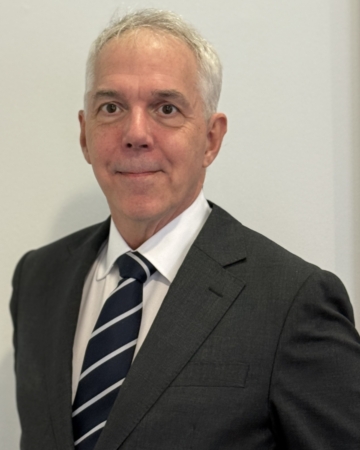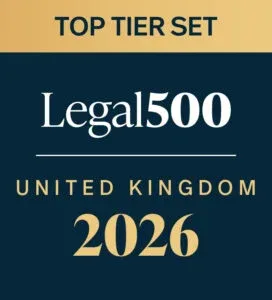Definitely not Maybe: Finding the Balance of Probability in Noise Deafness Litigation
Added in: Personal Injury
On the 18th December 2024, Mr. Recorder William Evans handed down judgment in Cook v Ketson, a noise induced hearing loss case which was heard on the 10th and 11th October 2024[1].
Mr. Nick Grimshaw of Deans Court Chambers, instructed by Ms Louise Ramsden (DAC Beachcroft, Sheffield) appeared for the successful Defendant. Ms Jessica Woodliffe of Ropewalk Chambers, instructed by Baker & Coleman, appeared for the Claimant, whose case was dismissed.
Whereas there are fact sensitive issues in the judgment, there was a point of much wider importance for disease practitioners, concerned with the correct basis for a diagnosis of noise induced hearing loss to be made. The mainstream and well-established criteria for proving a diagnosis in noise deafness cases are the Coles, Lutman and Buffin Guidelines (2000) (‘CLB'). The Claimant’s team sought to argue that noise deafness can be diagnosed with a much lower level of lifetime noise exposure than CLB permits, citing a paper published by Moore, Lowe and Cox[2] (“MLC”) in 2022. MLC has been widely circulated in support of Claimant cases in the last two years but, to the best of the writers’ knowledge, the decision in Cook v Ketson is the first time it has been subject to judicial scrutiny in a case involving typical factory noise (‘broadband noise’) and with the advantage of expert medical evidence called by both parties.
Although this is a first-instance decision, and not binding on other County Court judges, the trial was purposefully allocated to be heard by a Judge with experience of disease litigation and his judgment is likely to be highly persuasive in other noise deafness cases.
Facts
The basic facts were:
1. The Claimant worked for the Defendant between 1975 and 1980 and was not exposed to noise elsewhere.
2. The single joint expert engineer evidence concluded that the Claimant was exposed to excessive noise (over 90 dB(A) LEp,d) and his lifetime noise dose was 96.8 dB(A) NIL
3. The Claimant had 3 audiograms and for reasons beyond the brevity of this article, there was some dispute as which should best be used for diagnosis. The Consultant ENT experts (Mr Hisham Zeitoun for the Claimant, Mr Kevin Green for the Defendant) broadly agreed that the most reliable audiogram met CLB criterion R3a (notches or bulges of ≥10dB) but did not meet criterion R3b (notches or bulges of ≥20dB). In other words, there was no evidence that the Claimant was unusually sensitive to noise damage.
Claimant’s Problem
The Claimant’s problem was that he could not demonstrate his hearing was especially sensitive to noise (so as to invoke R3b) and so needed to show that he had a lifetime noise dose which was likely to cause noise induced hearing loss in over 50% of people, so as to meet the balance of probabilities test in R3a. The SJE Engineer assessed his lifetime NIL at 96.8dB(A) but under R3a an NIL of 100dB(A) was needed to show causation.
Mr. Zeitoun (for the Claimant) relied upon MLC to suggest a much lower level of lifetime noise exposure would suffice, namely ≥90 dB(A) NIL. Thus, determination of the case depended upon which Guidelines were to be used by the court to determine causation.
The MLC Paper
The authors state (p2) that “In a medico-legal context, diagnosis of NIHL is based on the “balance of probabilities”, i.e. a diagnosis of NIHL requires a greater than 50% probability of NIHL being present. This is very different from the conventional criterion used in statistical analysis that a certain result should have less than a 5% probability of occurring by chance. The motivation for the present paper stemmed from the experience of the authors that the diagnostic criteria that are commonly employed in the UK, which are discussed in detail below, lead to many people who have a history of noise exposure and who have hearing loss being denied compensation.” The writer’s experience has been that in noise deafness litigation the MLC authors are almost exclusively instructed to act as medicolegal experts on behalf of claimants. Nevertheless, we recognise the declaration of conflicting interest section in the MLC paper explains they act for both claimant and defendant.
The problem with the authors’ “motivation” is that it appears to constitute a cognitive bias which explicitly contemplates departure from the standard of proof required in civil cases; namely that the criterion should be set where it is more likely than not that the noise exposure to which the Claimant was exposed would cause noise induced hearing loss; or that it would so in (just) more than 50% of people so exposed. The same criticism cannot be levelled at CLB, which explicitly adopted the conventional ‘balance of probabilities’ test utilised by the courts in England and Wales.
At (p2) MLC continues that: “the purpose of this paper is to review methods for the diagnosis and quantification of NIHL and to provide guidelines for the methods that are recommended for assessment, especially in a medico-legal context, where the requirement for a diagnosis is “on the balance of probabilities” rather than with certainty.”
Momentarily, it appears as if MLC might be getting back on track. However, the authors then discuss CLB and under Requirement for Sufficient Noise Exposure (page 3), they state that “Coles et al. (2000) estimated this requirement to be met when there was “an equivalent daily 8-h continuous noise exposure (LEP,d) of not less than 85 dB(A) for a sufficient number of years to lead to a cumulative exposure of at least 100 dB(A) NIL, the so-termed Noise Emission Level.” This requirement seems to us to be excessively stringent. If a given NIL is sufficient to produce NIHL in 50% of individuals, then it follows that at least some individuals would experience NIHL for lower exposure levels. Fairness to a claimant requires only that the noise exposure should be sufficient to produce NIHL in a reasonable proportion of individuals” (our emphasis). Again, the MLC authors explicitly adopt a threshold that is far lower than the ‘balance of probabilities’ test required in civil claims.
Irrespective of the authors’ motives for writing their paper, it is worth looking at the scientific basis for the claims made, to assess if it is capable of forming the basis for proving causation according to the civil standard. This appears at page 3 of their paper: “A problem with R2(a) is that an NIL of 100 dB(A) is probably higher than the NIL required for 50% of individuals to experience NIHL. Passchier-Vermeer (1974) presented evidence showing that exposure to steady noise with a noise rating (NR) of 85 dB [approximately equal to 90 dB(A)] for eight hours per day for five days per week for ten years, giving an NIL of approximately 100 dB(A), is sufficient to produce a median hearing loss of 17 dB at 4 kHz. This indicates that a criterion NIL of 100 dB(A) is higher than appropriate. She showed further that a 10-dB lower exposure [a NR of 75, equivalent to 80 dB(A) for the same duration, giving an NIL of approximately 90 dB(A)] led to a hearing loss of 11 dB at 4 kHz for the 10th percentile, i.e. that lower NIL had the potential to produce hearing loss in some individuals. In our opinion, a criterion NIL of 90 dB(A) is appropriate, since this will lead to NIHL in a small proportion of individuals. We recommend an NIL of 90 dB(A), with no lower limit on LEP,d, in all cases of exposure to broadband steady noise.”
We make two further observations in the context of the medicolegal arguments around scientific acceptance of the MLC paper:
Firstly, the authors of the MLC paper criticised CLB because (p2) “the diagnostic criteria commonly used in the UK, referred to as the CLB guidelines, were developed over two decades ago” but then rely (in respect of broadband, factory noise) upon research undertaken in 1974, 48 years prior to the MLC publication.
Secondly, the basis for lowering the lifetime noise dose to 90 dB(A) NIL is explicitly based upon the potential effect of such exposure on the ‘10th centile’ (those more sensitive to noise damage than 90% of the population). It is accepted[3] that it is not possible to know how sensitive a Claimant’s hearing is to noise, thus it is necessary to assume average susceptibility. Further, it is well established that a pattern of hearing loss (a notch or bulge) consistent with noise induced hearing loss occurs in a proportion of those without noise exposure[4].
The Judgment
Turning (at last!) to the judgment in Cook v Ketson, the judge saw through the evident inconsistency of the lower standard espoused by the authors of the MLC paper and the civil standard of proof (balance of probabilities, or ≥50% probability):
“[50]. If 90% of a population with a particular level of hearing loss having been exposed to a particular level of noise have suffered the hearing loss from a cause that was not the noise then it is impossible to say that it is more likely than not that the hearing loss of any one person of that population has been in fact caused by the noise. It is more likely than not to have been caused by something other than noise exposure. Moore et all consider fairness to a claimant requires only that the noise level should cause hearing loss in a “reasonable proportion” of individuals. It appears they consider that such a reasonable proportion is 10%. It is the duty of the court to be fair to all parties and to apply the relevant legal principles to the evidence. The problem with the Moore et al criteria is that if the suggested NIL causes a hearing loss in only a small proportion of individuals it cannot be said that in each individual case it was in fact caused by noise because it is more likely not to have been.”
Concluding remarks are best left to the learned judge:
“[51]. In their paper Moore et al describe their motivation to revisit the Coles guidelines being that they observed in a clinical setting that some patients were denied compensation when they considered they should have received it. It seems to me that they then go on to examine the data upon which they rely with that in mind. That is the wrong way around. The criteria to determine the evidence required to find causation proved on a balance of probabilities should be determined first and not determined to make good a theory which is not based on any pre-determined criteria. They also fail to explain why it is they consider that a proven noise level which causes NIHL in 10% of the exposed population can possibly amount to proof of causation on a balance of probability in all such persons exposed.”
The full judgment is available here and the paragraphs considered may be found at 42 to 51 and 53. There can be little doubt that the authors of MLC were motivated by their desire to lower the diagnostic threshold, but in so doing rendered the paper of no utility in proving causation on the balance of probabilities. Although Guidelines based on epidemiology will always provide an element of ‘rough justice’ (given one cannot know how susceptible a Claimant is to either noise induced hearing loss or age associated hearing loss), the same need to adopt the balance of probabilities test is necessary to prove causation in civil cases. Finally, a recent study[5] showed that although the 2000 Guidelines had a false positive rate (specificity) of 31%, the proposed MLC Guidelines had a false positive rate of 56%.
The tried and tested CLB 2000 Guidelines, used in Court almost universally since about 2006, remain the ‘acid test’ for causation in noise induced hearing loss claims.
CLB emphasises that “these guidelines have been derived after careful consideration of the data available and keeping in mind the legal criterion that the diagnosis should be likely ‘on balance of probabilities’ or ‘more likely than not’.”
Industrial deafness claims may involve increasingly sophisticated audiological analysis, but the scales of justice remain governed by conventional weights and measures.
By Doug Cooper & Nick Grimshaw
Barrister
Deans Court Chambers
21st February 2025
[1] Cook v Ketson H68YX745 (unreported, Coventry CC, 18th December 2024)
[2] Moore, Lowe & Cox, Guidelines for Diagnosing and Quantifying Noise-Induced Hearing Loss, Trends in Hearing 2022, 26, 1-21 (https://journals.sagepub.com/doi/full/10.1177/23312165221093156)
[3] ISO1999: 2013(E): Introduction, paragraph 2 “For a single individual, it is not possible to determine precisely which changes in hearing threshold level are caused by noise and which changes are caused by other factors”
[4] Just over 30% in the National Study of Hearing, 11% according to Nondahl et al., 40% per Osei-Lah & Yeoh, about 50% according to Lie et al.
[5] Lutman, de Carpentier & Green, Guidelines for Diagnosis of Noise-Induced Hearing Loss and Their Specificity, Clinical Otolaryngology, 2024, 0:1-10. https://doi.org/10.1111/coa.14268










